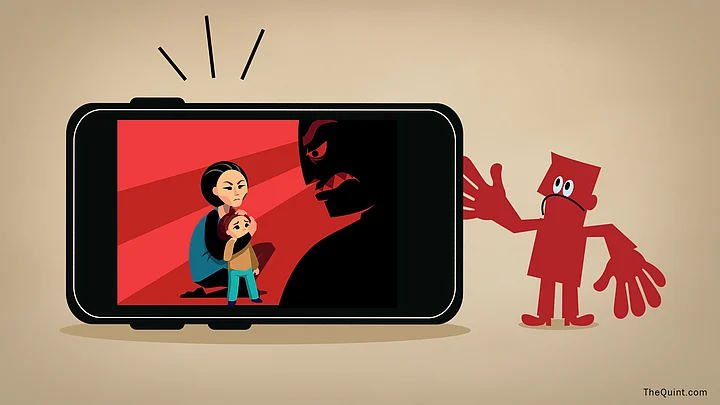Rape videos being sold in Delhi caused ripples of horror across the country. “Who are these vile people who would buy violent videos to view for pleasure?”
You and me, that’s who.
In the age of technology and social media, videos glorifying violence - sexual and physical- are easily available; in the form of a click-bait article, a swipe on a smartphone, ‘snuff’ videos on YouTube and of course, news channels on TV. And they are consumed on a daily basis by thousands of people, unflinchingly.
From TV to YouTube, A Conspiracy of Violence?
If rape is an act of power, a video filming the act becomes a spectacle glorifying the violence inherent in rape. Controlling Whatsapp and YouTube is neither possible nor desirable, but why are TV channels complicit in catering to a voyeuristic audience?
In February 2015, Sunita Krishnan, a rape survivor and founder of ‘Prajwala’ came upon two videos of a gangrape being circulated on WhatsApp. Enraged, she blurred the faces of the victim, highlighted the rapists’ face and put the videos on YouTube as a part of her ‘Shame the Rapist’ campaign. She was criticized for giving the gruesome video a wider audience and lauded by some for speaking against shaming rape victims in an explicit manner.
Also Read: In 2 Months, #ShameTheRapists Gets 90 Videos
Irrespective of which side of the debate you are on, chances are you would have seen a glimpse of the rape videos uploaded by Krishnan. This is largely thanks to TV channels who ran the footage incessantly, while simultaneously debating the ethics of distributing rape videos.
With technology like cheap smartphones and social media like YouTube and WhatsApp, distributing ‘byte-sized’ violent videos have become easier. But traditional media like TV channels step in, to fan the fire and the result is a culture which consumes violence for entertainment, horror or just plain sensationalism.
Voyeurism? No, the Nation Wants to Know!
Reporting news is often a frenzied pursuit, often in search of ‘news’ which elicits emotions of horror and disgust. It is easy to argue that TV channels showing rape videos while reporting Krishnan’s campaign were fulfilling their duty as media organisations. However vile the news may be, surely the nation wants to know?
But does it need to know?
For instance, as far as ISIS executions are concerned, the global media policy is to never broadcast graphic videos or any other material which may be seen as ‘terror propaganda.’ Reporting on ISIS is a priority but glorifying violence which might lead to fear in the minds of the viewers watching, is not.
Also Read: Is the Media’s Love of Clickbait Helping ISIS?
In a world where voyeurism gets eyeballs, the line between what qualifies as ‘news’ and voyeurism is a blurry line, at best.
Self-censorship is not entirely a bad idea, and in some cases, the nation is better off not knowing the graphic details.
But, the digital world is a different creature. Heavy.com is a website which puts out all ISIS execution videos, with a graphic warning sign, despite criticism. As a result, a Google search for ‘ISIS beheading’ throws up a slew of videos.
Extreme, glorified violence. Ready to be paused, played, downloaded and consumed.
‘Bhadra’: An Incident of Horror or Pleasure?
Gautam S, a medical student in Chennai threw a dog off the building, with his friend filming. Ostensibly, an exercise in ‘fun.’ Soon enough, the video went viral, with TV channels and websites across the country replaying, embedding and sharing the video. Yes, the reaction elicited horror and anger. But, there was an element of voyeurism underlying the horror.
“Look at how how evil these boys are!”
Look. That’s the key word.
Why did people insist on seeing it multiple times, if it wasn’t an act of voyeuristic pleasure?
Also Read: Poor Legal Sense Failed Bhadra, NOT the Law
The Chicken or the Egg Question
Violent videos, on YouTube and TV, exist because there is a demand for such a spectacle. Conversely, the audience for such videos is created by easy accessibility and availability of content like rape videos.
Like everything which is premised on virality in the digital age, we are left deliberating who is to blame – much like the chicken or egg question.
But, instead of trying to solve the riddle and pass on the blame, maybe it is time to pause before hitting ‘play.’
